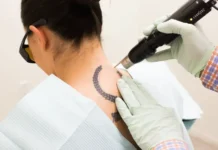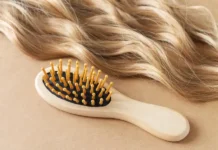Most hair loss in men is caused by male-pattern baldness or alopecia, a genetic trait inherited from their parents. Other factors include hormonal changes, certain illnesses such as thyroid disease, anemia, secondary syphilis infection, chemotherapy, and vitamin levels. Hair loss can result from stress and extreme shedding, usually referred to as telogen effluvium. Treating hair loss is the only option for any male to enjoy their hair’s aesthetic values that need reliable and effective ways like Gro hair transplantation. Moreover, here’s everything you need to know about treating male hair loss:
The Best Hair Loss Treatments for Men in 2021 and Beyond
Since you’re already aware genetic traits are the significant causes of hair loss in men, other reasons can also make it an uphill task to treat and prevent the condition. For this and more reasons, knowing the best treatment options taking the world by storm in 2021 is an excellent consideration to keep in mind. According to the American Hair Loss Association, about two-thirds of men lose their hair from the age of 35 years, and by the age of 50, about 85% of men have hair loss and hair thinning problems. Although many reasons result in men losing their hair, many treatments and preventive options are available to embrace. Let’s take a look at them:
Eating a Well-Balanced Diet
An exceptionally balanced diet is the first step to keeping your hair in its peak and impressively looking shape. Be sure to include fruit, vegetables, lean proteins, omega -3 fatty acids-rich food like salmon, tuna, flax seeds, egg yolks, hemp seeds, mackerel, and walnuts into your diet while limiting sweets and other sugary foods. Also, adding in iron-rich foods can boost your hair’s remarkable growth and reducing loss. Lastly, be sure to drink plenty of water after and before meals.
Medications
If your hair loss is extreme, certain medications can be the best treatment and prevention options to embrace. You can assess some of these medications over the counter, while others need the help of qualified hair loss professionals to prescribe them to you correctly. Typically, most of the best medications for hair loss come in foams and other topical ointment options. The most common and effective is Rogaine, commonly known as Minoxidil and Propecial, also known as Finasteride. Let’s break the two down and see how they work:
Minoxidil-Originally developed and designed to treat high blood pressure. The developers concluded that the drug’s side effects were excessive and realized the finding was an excellent option for other illnesses. When tested for unwanted hair growth, Minoxidil worked magnificently. It is also considered a perfect choice for male baldness and its effectiveness in unwanted hair growth.
The drug works best by showing its effectiveness in widening the hair follicles, causing a thicker strand to boost hair growth and development, and prolongs the growth time for hair. When this happens, it causes long hair and an increased number of hair strands, thus developing and filling areas with hair loss. Even better, when used properly, Minoxidil has proven to be exceptionally safe and effective.
Finasteride-If you’re suffering and wondering what the best treatment option for male pattern baldness is, this is the right choice you’ve got. Male pattern baldness is challenging to prevent and treat with other options because the condition focuses on developing around the crown and the middle of the scalp, which only needs an effective treatment option like Finasteride.
The drug’s effectiveness comes from its ability to limit and reduce the amount of a unique hormone in the body called DHT or Dihydrotestosterone, an endogenous androgen sex steroid and hormone derived from male testosterone. The hormone is responsible for most male characteristics such as deep voice and more. Once its production increases and starts to flow freely through the bloodstream, DTH links to the hair follicles in the scalp leading them to shrink, thus becoming less able to support hair development and strength, leading to hair loss.
With Finasteride’s effectiveness, DHT levels are reduced, which causes hair regrowth and reduces hair loss. However, unlike other options and drugs such as Minoxidil, Finasteride doesn’t affect hair growth in different body areas. Still, it focuses primarily on the appropriate place, which is the scalp.
Conclusion
When you’ve hair loss, start treating and preventing the conditions by comprehensively following the natural remedy options before turning to drugs and understanding that DHT is the primary cause of hair loss; thus, medications like Finasteride should come first in your choices.
Read Also : Hair Color Ideas, For T part wig & Full Lace 99j Wig



































































